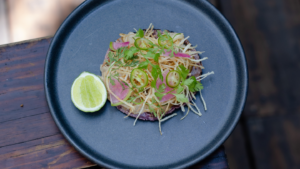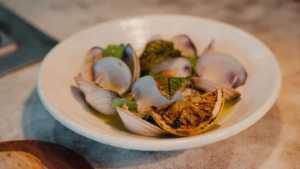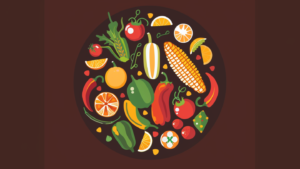(3 minute read)
We believe in the power of a meal not just to satisfy hunger but to nurture the soul, creating moments that linger in the heart and palate. In every loaf of our sourdough bread lies a story of love and connection. A traditional form of bread, it has been a staple in many cultures for centuries. Our approach to baking is deeply intertwined with the philosophy of “we love food & we love people.” This mantra reflects the intersection of exquisite taste and human touch.
Sourdough vs. Regular Bread
The heart of sourdough lies in its starter – a living colony of yeast and bacteria. Unlike regular bread, sourdough uses a fermented mixture of flour and water, known as a “starter,” to rise.
This natural fermentation imbues sourdough with its characteristic tangy flavor and airy texture. In contrast, regular bread typically uses commercially produced yeast, which speeds up the fermentation process but lacks the depth of flavor found in sourdough.
This unique process not only imparts a distinct tangy flavor but also offers various health benefits. Sourdough’s lengthy fermentation process breaks down the gluten and starches in the flour, making it more digestible and often more tolerable for those with gluten sensitivities. This process also helps in releasing more nutrients, making them more readily available for digestion. The presence of beneficial bacteria, such as Lactobacillus, also adds probiotic qualities to sourdough, promoting better gut health. As the cherry on top, it has a lower glycemic index compared to regular bread. This means it causes a slower rise in blood sugar levels, making it a healthier option for those monitoring their blood sugar, like individuals with diabetes.
Shelf life, preservation and sustainability
Due to its acidic nature, it is less hospitable to spoilage-causing bacteria, meaning your sourdough loaf stays fresh longer without the need for preservatives. As well as a more environmentally friendly approach to baking. It relies on wild yeast present in the environment, as opposed to commercial yeast which requires an industrial production process.
Meet Paty and Andrea: Our Sourdough Starters
Our sourdough breads are more than just a menu item; they’re a living, breathing part of our restaurant’s family. Named with affection, Paty in Tulum and Andrea in San José del Cabo, they represent our commitment to tradition and quality. Each batch of sourdough is a testament to the art of baking, nurtured over several days to develop the perfect taste and texture.
The real secret to the depth of flavor in our sourdough is time. Paty and Andrea have been with us for x 821 days and 470 days, respectively. Each day adds to the complexity of their flavors, making our sourdough bread truly unique.Maintaining Patty and Andrea involves daily dedication, with a keen eye on temperature and environment, ensuring they remain vibrant and active. Our chefs nurture these starters daily, ensuring they are always at their peak.
At our restaurants, each piece of our bread is carefully grilled in our charcoal ovens, bringing out a delightful smokiness and a perfect, crispy texture. We complement this with our specially crafted smoked butter, which adds a layer of depth and richness to the overall experience. The final touch is a sprinkle of cultivated salt in San José del Cabo and Colima salt in Tulum, both chosen for their unique ability to accentuate the natural flavors of sourdough and butter. This careful preparation and presentation pays homage to time-honored techniques and the love we pour into this item of our culinary heritage and passion.
In the spirit of sharing and culinary exploration, we are excited to bring the magic of our kitchens into your home with a series of sourdough recipes inviting you to create and enjoy in your own kitchen. Don’t forget to pick a name. Here’s a simple guide to get you started:
Ingredients:
- Whole wheat flour ( Ideally organic unbleached flour which is rich in endospores, it makes for a stronger, faster sourdough with better taste)
- Water (ideally filtered or dechlorinated)
Equipment:
- Glass or plastic container (avoid metal)
- Kitchen scale
- Spoon or spatula for stirring
- Cloth or paper towel to cover
Day 1: Initial Mixture
Mix: In your container, combine 50 grams of whole wheat flour with 50 grams of water. Stir until there are no dry bits of flour.
Cover: Place a cloth or paper towel over the container. Secure it with a rubber band.
Rest: Leave the container at room temperature (around 70°F or 21°C) for 24 hours.
Day 2: First Feeding
Observe: You might see a few bubbles, which indicates fermentation.
Feed: Add 50 grams of whole wheat flour and 50 grams of water to the mixture. Stir well.
Cover and Rest: Cover it back up and leave it for another 24 hours.
Day 3-7: Regular Feedings
Remove Half: Each day, discard about half of the starter (around 50 grams). This helps control the acidity and provides room for growth.
Feed: Add 50 grams of flour and 50 grams of water after removing half. Mix well.
Cover and Rest: Continue this process for about 5 days. By this time, your starter should be bubbly and have a pleasant, slightly sour smell.
Maintaining Your Starter
– Daily Feedings: If kept at room temperature, feed it daily.
– Refrigeration for Less Maintenance: If you don’t plan to use it daily, store it in the refrigerator and feed it once a week.
– Activating Refrigerated Starter: Take it out 1-2 days before you plan to bake. Feed it daily until it’s bubbly and active.
Tips:
Flour Type: You can switch to all-purpose flour after the initial phase if desired.
Water Temperature: Use lukewarm water to encourage yeast activity.
Consistency: Your starter should be like thick pancake batter. Adjust with a bit more flour or water if necessary.
Patience is Key: Starters can take longer to develop depending on the environment and flour. Don’t worry if it takes a bit longer than a week to see vigorous activity.
Once your starter is active and bubbly, it’s ready to be used in sourdough recipes. Remember, sourdough baking is as much an art as it is a science — enjoy the process and don t forget to give a name to your sourdough! It s a living being and your new pet.
